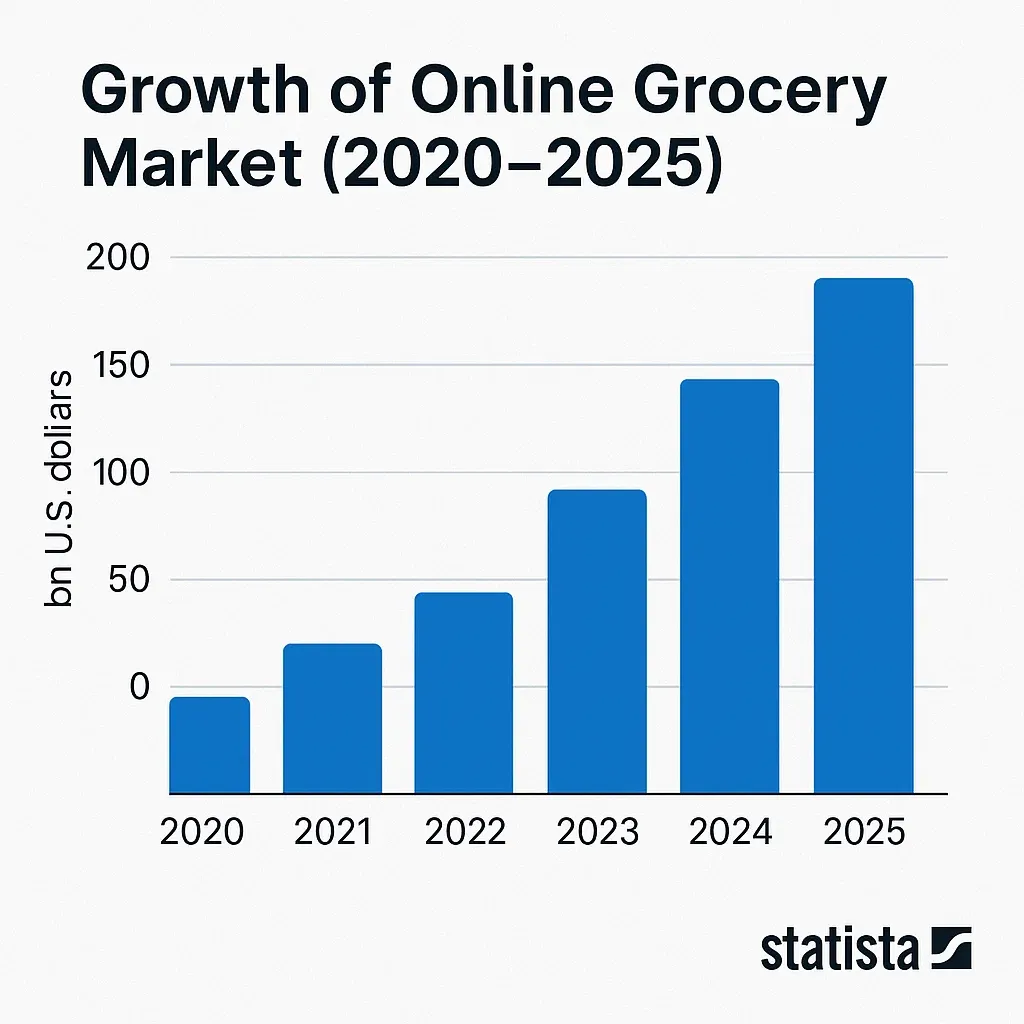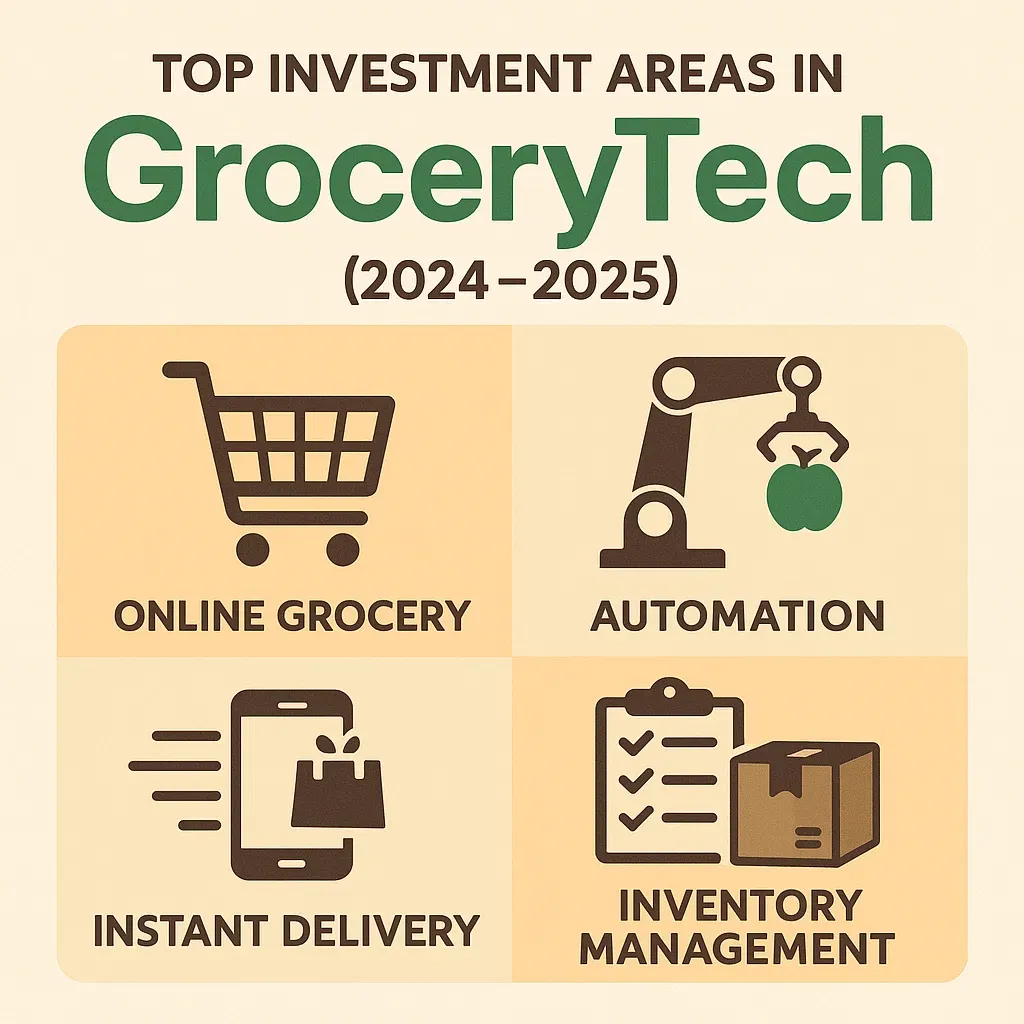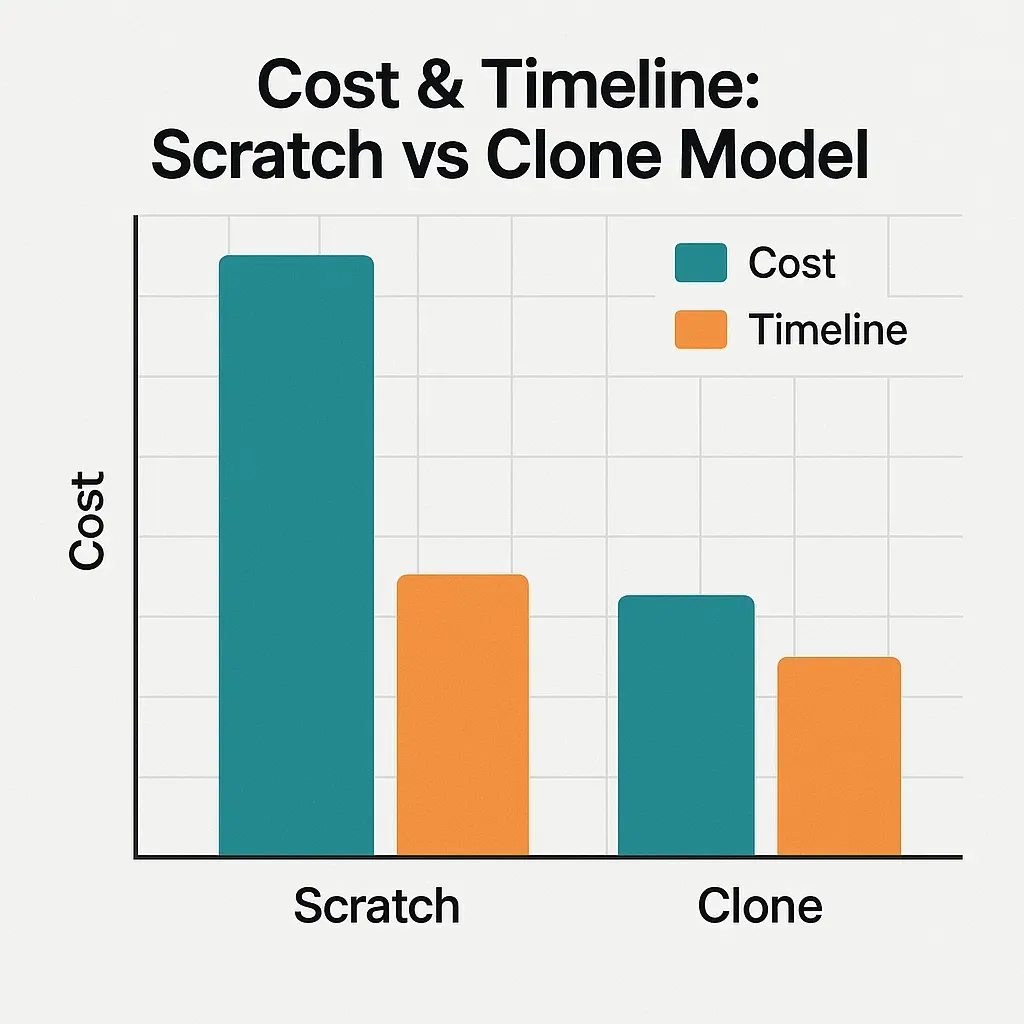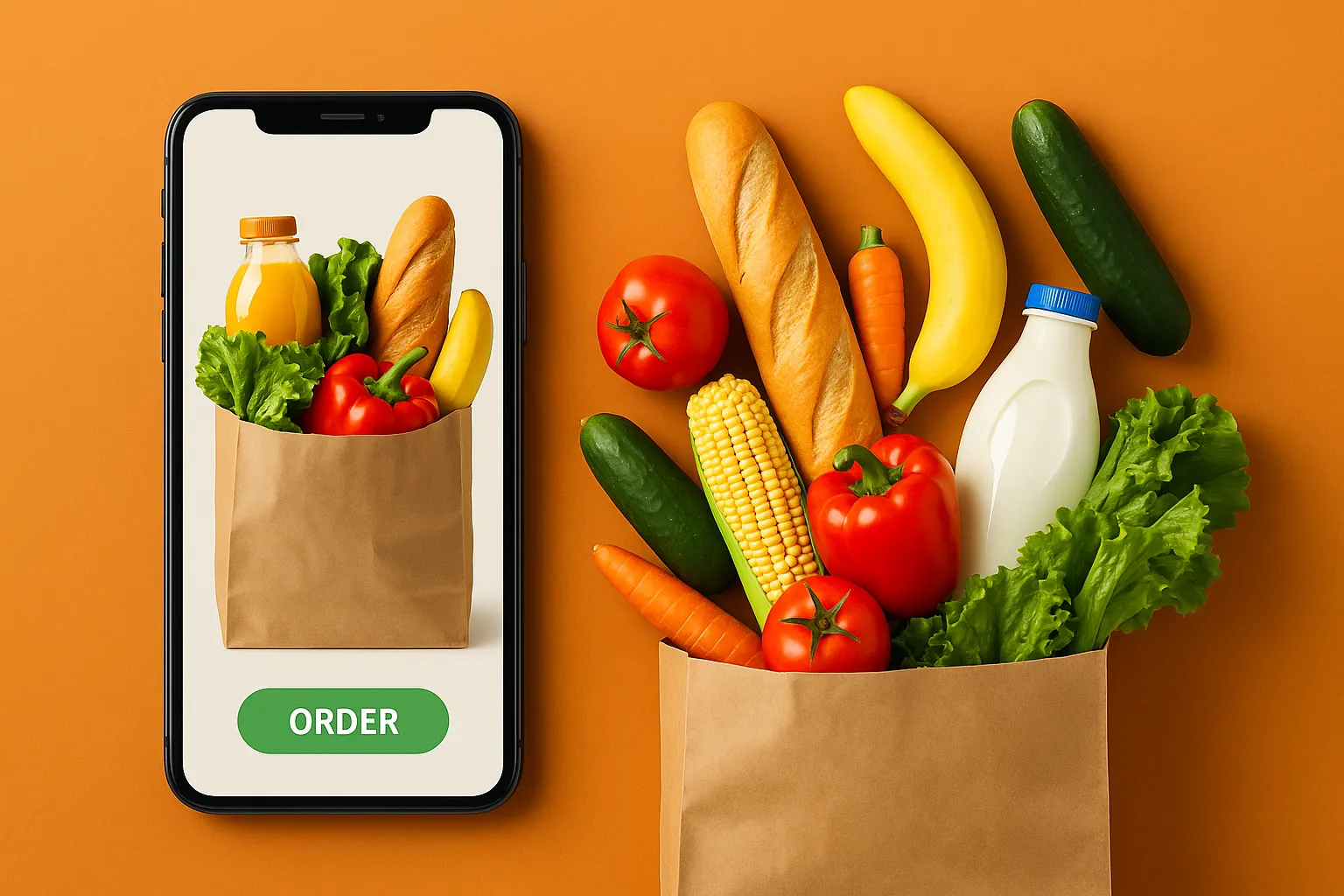The grocery delivery industry has witnessed a transformative shift, especially post-2020, with digital adoption, urban consumer lifestyles, and last-mile logistics driving its evolution. In 2025, grocery delivery apps stand out as one of the most promising startup verticals for entrepreneurs and digital agencies.
If you’re exploring where to invest next, launching a grocery delivery app—especially one backed by a clone-based development strategy—can put you on the fast track to profitability. From hyperlocal shopping platforms to AI-enabled reordering systems, the opportunities are rich and varied.

Read more: How to Start an Online Grocery Delivery Platform Business
Why Grocery Delivery Apps Are a Hot Opportunity in 2025
The online grocery sector has matured from a niche luxury to a daily necessity. According to a 2024 report by Statista, the global online grocery market is projected to reach $800 billion by 2027, growing at a CAGR of over 24%. This is driven by demand for convenience, time efficiency, and contactless commerce.
Tech and Consumer Trends Driving the Boom
- AI and predictive analytics are making it easier for apps to suggest and auto-fill repeat orders.
- 5G and real-time location tracking are enabling smoother last-mile logistics.
- Subscriptions, micro-fulfillment centers, and dark stores are lowering operational overheads.
Investment Momentum
CB Insights reports that venture capital funding in grocery-tech startups surpassed $5.3 billion in 2024, focusing on platforms offering personalization, sustainable packaging, and fast delivery models.
Yet, gaps remain—rural logistics, multi-lingual app access, and dietary-specific shopping are still underserved, making them prime territory for innovative new apps.

Read more: How Your Grocery Delivery App Features Drive Development Costs
Top Profitable Grocery Delivery App Ideas to Launch in 2025
1. Hyperlocal Grocery Delivery App
A hyperlocal grocery delivery app connects users with nearby vendors for ultra-fast delivery of fresh produce and essentials. It thrives on the promise of 30–60 minute fulfillment, making it ideal for urban shoppers who value speed and freshness. Monetization stems from delivery fees, vendor commissions, and in-app promotions.
Monetization: Delivery fees, vendor commission, in-app ads
Why it works: Consumers prefer fresh, fast, and local. Hyperlocal apps offer 30–60 minute delivery windows—perfect for urban users.
2. Subscription-Based Grocery Refill App
This model offers curated grocery boxes delivered weekly or monthly, catering to recurring household needs. It guarantees predictable revenue through subscription plans and add-on services, especially popular among busy professionals and elderly users. It’s a loyalty-driven model perfect for scaling.
Monetization: Subscription tiers, add-on services, B2B corporate plans
Why it works: Predictable recurring revenue and customer loyalty; great for busy families and elderly users.
3. Specialty & Organic Grocery App
Focused on delivering organic, vegan, keto, or gluten-free groceries, this app serves health-conscious and niche dietary audiences. With premium pricing and branded product partnerships, it taps into a rapidly expanding market demanding wellness-first food options.
Monetization: Premium pricing, product markups, brand partnerships
Why it works: Growing health-conscious consumer base and underserved dietary niches.
4. Community Co-op Grocery App
Designed for eco-conscious users, this app connects local farms directly with buyers to promote ethical sourcing and zero-waste shopping. It generates revenue through platform access fees and community-driven subscriptions, supporting sustainability while offering fresh, local produce.
Monetization: Platform fee, donation models, partner co-op subscriptions
Why it works: Sustainability and local sourcing are top priorities for Gen Z and millennials.
5. AI-Based Smart Reordering App
An intelligent grocery platform that learns from user behavior to automate weekly grocery reorders. It boosts convenience and personalization, driving monetization through smart plan subscriptions and brand-sponsored product placements tailored to shopping habits.
Monetization: Smart plans, data-backed upselling, brand-sponsored suggestions
Why it works: Convenience-driven users value automation and personalization.
6. B2B Grocery Supply App
Built for restaurants, hotels, and cloud kitchens, this app enables bulk grocery ordering at scale. It supports tiered pricing, priority shipping, and strong supplier integration, creating a stable business-to-business ecosystem with high-value repeat customers.
Monetization: Tiered pricing, priority delivery fees, supplier partnerships
Why it works: High volume and consistency of orders drive steady margins.
7. Multi-Vendor Grocery Marketplace App
A marketplace platform that allows users to shop from various grocery stores in one place, offering broad selection and price comparisons. It monetizes via vendor subscriptions, cart-based commissions, and promotional listings, all while maximizing customer retention.
Monetization: Vendor subscription, cart commission, feature listings
Why it works: Aggregated variety and pricing transparency boost retention.
What Makes an App Profitable in the Grocery Delivery Niche?
To truly thrive in the grocery delivery space, your app should possess these key profitability enablers:
- Recurring Revenue: Via subscriptions or auto-replenishment models
- High User Retention: Thanks to consistent needs and value-driven service
- Low Overhead: By adopting asset-light models or third-party delivery networks
- Effective User Acquisition: Through referral programs and SEO
That’s where clone app development offers a strategic advantage. With platforms like those from Miracuves, you get:
- Pre-tested backend logic
- Mobile-optimized UI
- Integrated payment gateways
- Customization flexibility
Cost to Build a Grocery Delivery App in 2025
Here’s what you might expect if building from scratch:
- Basic App: $15,000 – $30,000
- Mid-Range: $35,000 – $60,000
- Advanced App: $75,000 – $120,000+
Miracuves brings you a ready-to-launch Grocery App around $2500 – $3500 Fast setup, sleek design & Go Live in just 3-6 Days
Factors impacting cost include:
- Platform choice (Android, iOS, cross-platform)
- UI/UX complexity
- Backend logic and order routing
- Admin dashboard and analytics
- Third-party integrations (payments, maps, push notifications)
A clone-based solution from Miracuves can slash time-to-market by 60% and cut costs by almost 40%, making it the smarter route for founders eyeing 2025.

Read more: Online Grocery Delivery App Development Costs: What You Need to Know Before You Build
Tips for Founders to Launch a Successful Grocery Delivery App
1. Go MVP-First
Don’t aim for a feature-saturated app from Day 1. Start lean, get market feedback, and iterate.
2. Prioritize UI/UX
Your app must be intuitive for first-time users and efficient for regulars. A clutter-free flow boosts retention.
3. Validate Before You Build
Use surveys, waitlists, or mock landing pages to test demand before investing heavily.
4. Plan for Scalability
Ensure your backend can handle increasing orders, real-time inventory, and region-based customizations.
5. Post-Launch Marketing
Incentivize referrals, run loyalty programs, and partner with micro-influencers to grow organically.
Read more: How to Market a Grocery Delivery App Successfully After Launch
Launch your own on-demand marketplace with Miracuves’ Grocery Delivery App Development Company services—built for speed, scalability, and seamless customer experience.
Conclusion
The grocery delivery app landscape is entering a new golden age in 2025. With rising demand, supportive tech infrastructure, and shifting consumer behaviors, there’s never been a better time to launch. Whether you’re targeting hyperlocal buyers or subscription-based bulk consumers, there’s a profitable model waiting to be built.
Instead of spending months on development, leverage Miracuves’ ready-to-launch clone solutions. Their white-label offerings help you enter the market faster, validate quicker, and scale smarter.
At Miracuves, we help innovators launch high-performance app clones that are fast, scalable, and monetization-ready. Ready to turn your idea into reality? Let’s build together.
FAQs
Q:1 How much does it cost to build a grocery delivery app?
Between $15,000–$120,000 depending on features and complexity.
Q:2 What features should a successful grocery delivery app include?
User login, product catalog, smart cart, delivery tracking, payment gateway, and push notifications.
Q:3 Is it better to build from scratch or use a clone solution?
Clone solutions offer faster deployment, lower cost, and proven models—ideal for startups.
Q:4 Which grocery delivery model is most scalable?
Multi-vendor platforms and subscription-based apps offer the best scalability.
Q:5 Can I customize a clone grocery delivery app for my niche?
Yes, white-label clones like those from Miracuves are fully customizable.
Q:6 What are the fastest ways to acquire users post-launch?
Referral programs, influencer partnerships, and targeted Google/Facebook ads.
Related Articles:








